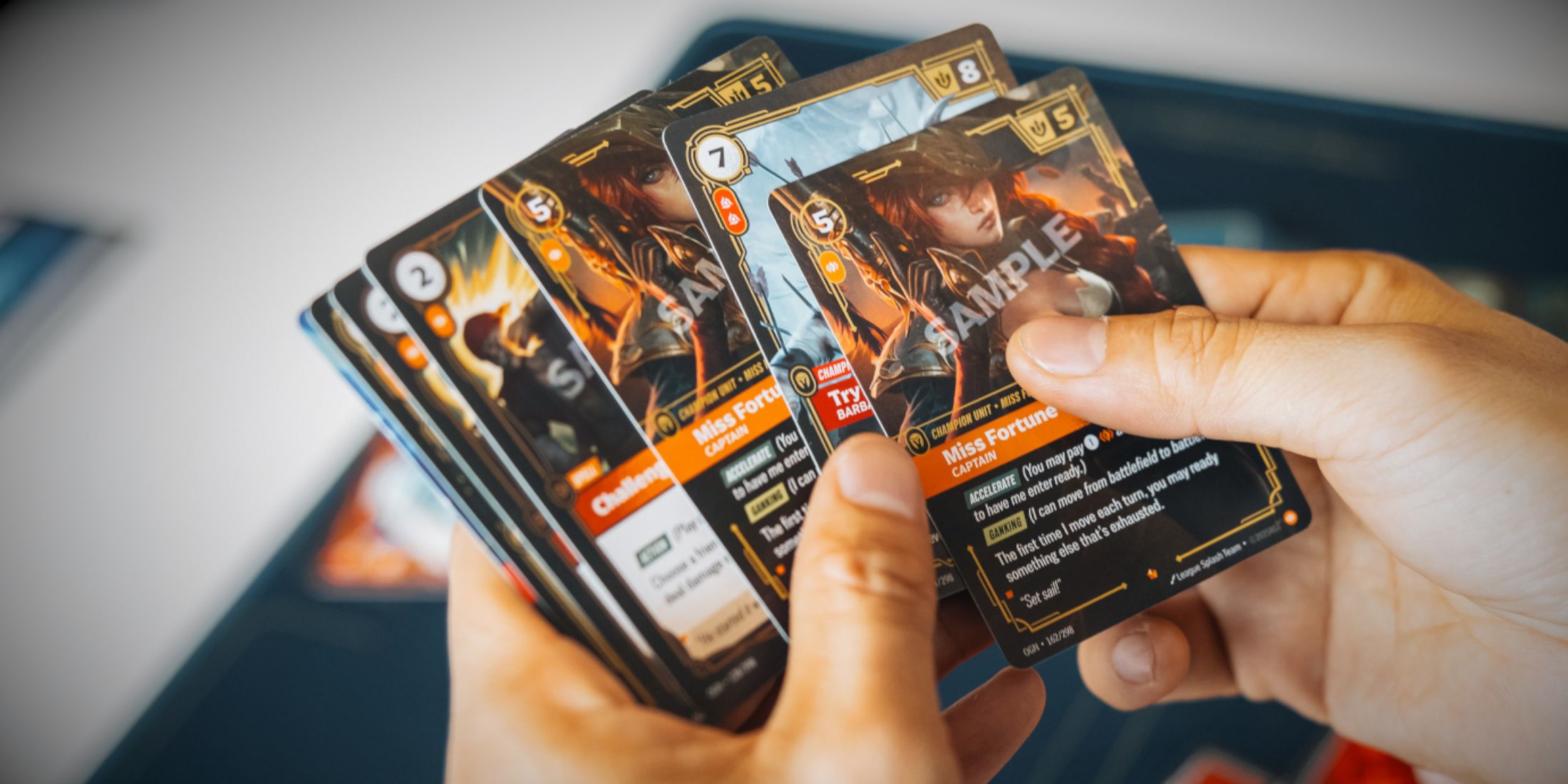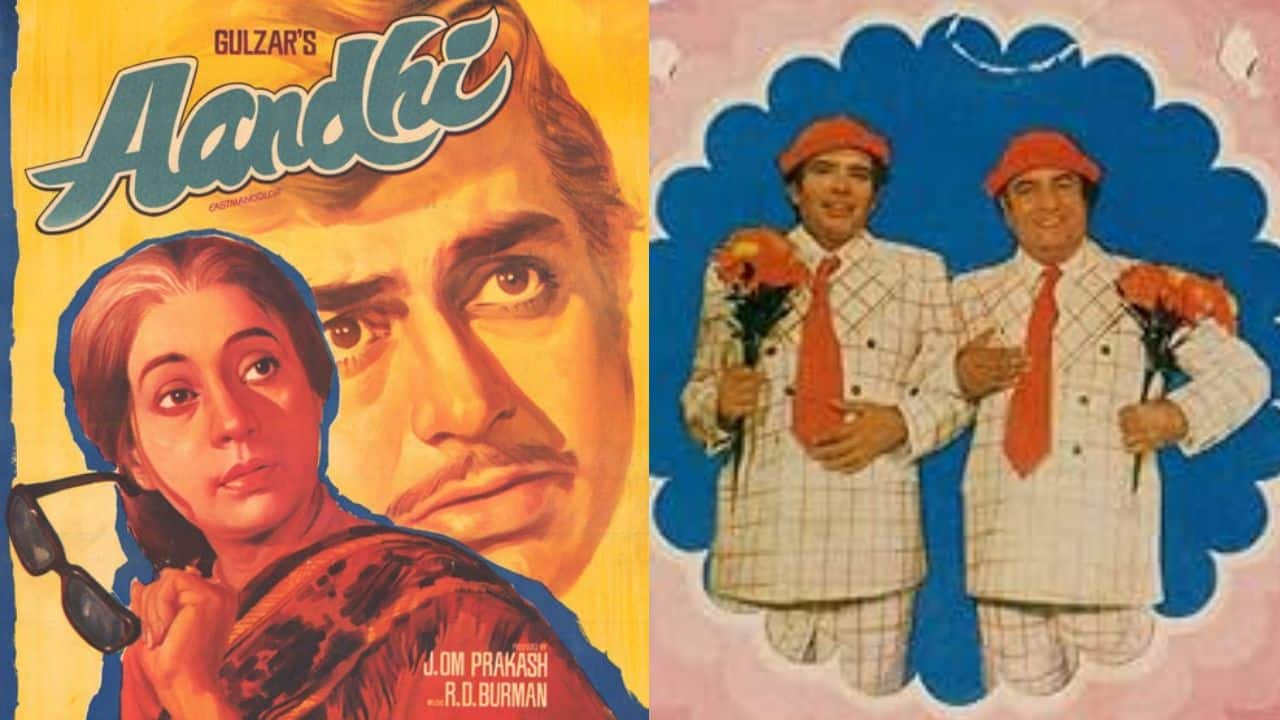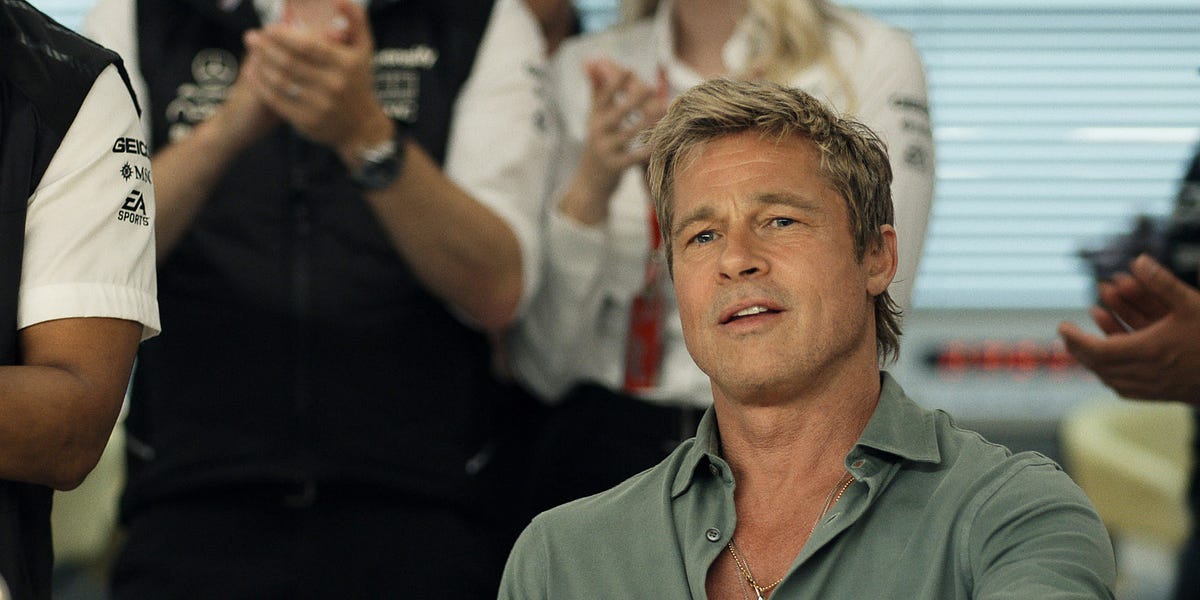is Riot Games' upcoming League of Legends physical trading card game, launching this fall with nearly 300 cards and a dozen playstyle-defining champions to pilot. Contrasting with some well-known TCGs, Riftbound isn't a deathmatch between opponents—instead, it's a race to score points by maintaining control of Battlefield cards. This race format paves the way for engaging multiplayer matches where nobody is eliminated until a winner is declared. Politics can come into play with shifting alliances and underhanded maneuvers, and some cards seem to be ideal for aiding teammates. Overall, it's a TCG that feels much like a real-time strategy game, with much of its League of Legends MOBA DNA kept largely intact.
Following up after a hands-on preview of Riftbound, Game Rant sat down with game director Dave Guskin to discuss the game's inception, design philosophy, balance considerations, and future plans. Guskin also had plenty of advice to offer future Riftbound players, and he also weighed in on the game's already-unfolding meta among playtesters.

Related
Riftbound is the TCG That League of Legends Fans Have Been Waiting For
Game Rant gets a hands-on look at gameplay and deckbuilding in Riftbound, a League of Legends TCG with a unique spin on strategic card gaming.
Yeah, good question. I would say some things are very similar to the original conception. The battlefields, and the separation between your base and the battlefield, that was pretty early on—that hasn’t changed very much. But the way we represent the champions and our resource system has changed a lot. I would say we probably iterated through like ten or so different systems for resources, and many different versions of like, what is your champion? You know, how many cards represent it? Does it start in your deck? Is it out front? Do you build your deck with it? That sort of thing.
So quite a lot of iteration there. But the essence of the game—like, hey, we want to build a friendly, multiplayer, social, in-person game—that’s never changed. That was from the original vision.
Great question. There are some champions that are a little bit more complex, where if you want to represent their identity—how they play in League, or what players love about those champions—it’s not appropriate for a first-set kind of situation. I wouldn’t say we couldn’t make it eventually, but there were definitely a few where I was like, “Oh, we should wait until later to do this,” when the game’s a little bit more established. Because if you simplify some champions like that, players don’t want that, right? The audience for that champion is someone who wants a little bit more of that complexity or that particularly intricate playstyle. I don’t know that I can remember specific champions, but maybe like a Kha’Zix or a Jhin—where it’s just a little bit less like, “Oh, this is something we want to come out of the gates with.” We want to give it time to bake and make the best version of that champion.
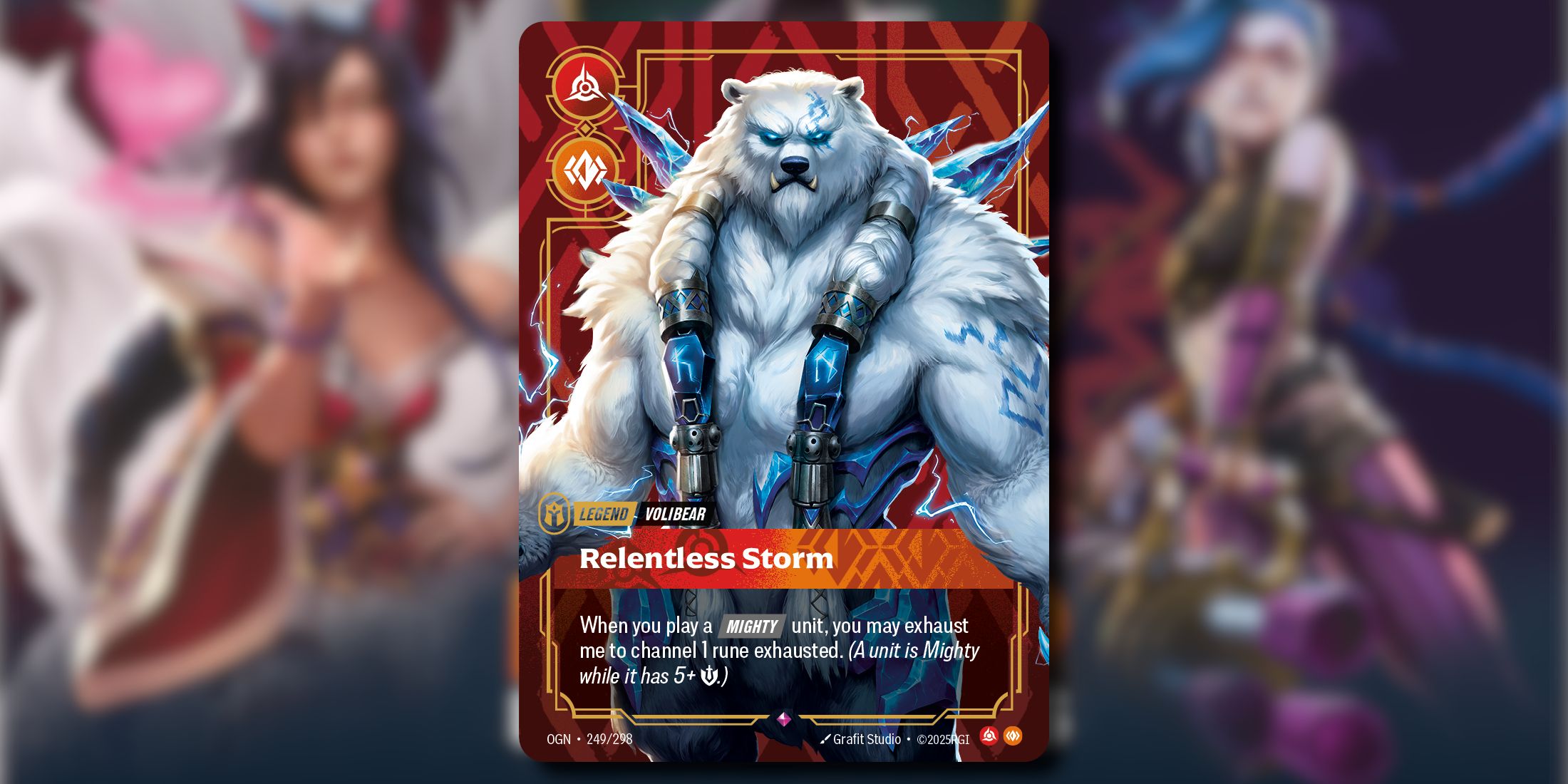
Usually the opposite—we’ll start with really complicated cards. It is true, because early on in the design process... So the way most card games work is, if you’ve played card games before, you kind of have a sense of, like, “Okay, here’s the bread-and-butter mechanics.” And then you want to capture whatever the feeling is of that character, or that playstyle, or that fireball, or whatever it is you’re trying to capture. And usually we’ll start kind of complicated, because you want to capture everything you can about it, right?
Like, a champion’s got four different spells they can cast, they have legitimate playstyles, they've got these items that change how they develop. So we’ll do something that’s pretty complicated and rich. And
I think we’re lucky in that we have a few different cards represent different pieces of the champion. There's the Legend, the two champion units that can have different playstyles, the signature spell, and even other stuff you can do.
Then we’ll start splitting it, right? Being like, “Well, actually, the fun part is the mobility of this champion,” or, “No, the fun part is being an assassin.” And then we focus down to like, “Okay, let’s try this one ability, see how that plays.” That didn’t work? Try this other ability. So it’s kind of like, start with a lot—throw everything at the page—and then cull down from there. Then we iterate to get the balance right and fine-tune the numbers.
It’s really about coming in with a goal, like, “We want this champion, or this particular card, to behave this way in a game.” We want the game to be all about this, or we want this to just be a little helper—it’s like a workhorse. That kind of helps you figure out what the numbers should be to deliver that experience. And you can’t really tell until you actually play, right? You try to figure out where the numbers should be, and then you play—and that helps you fine-tune them.
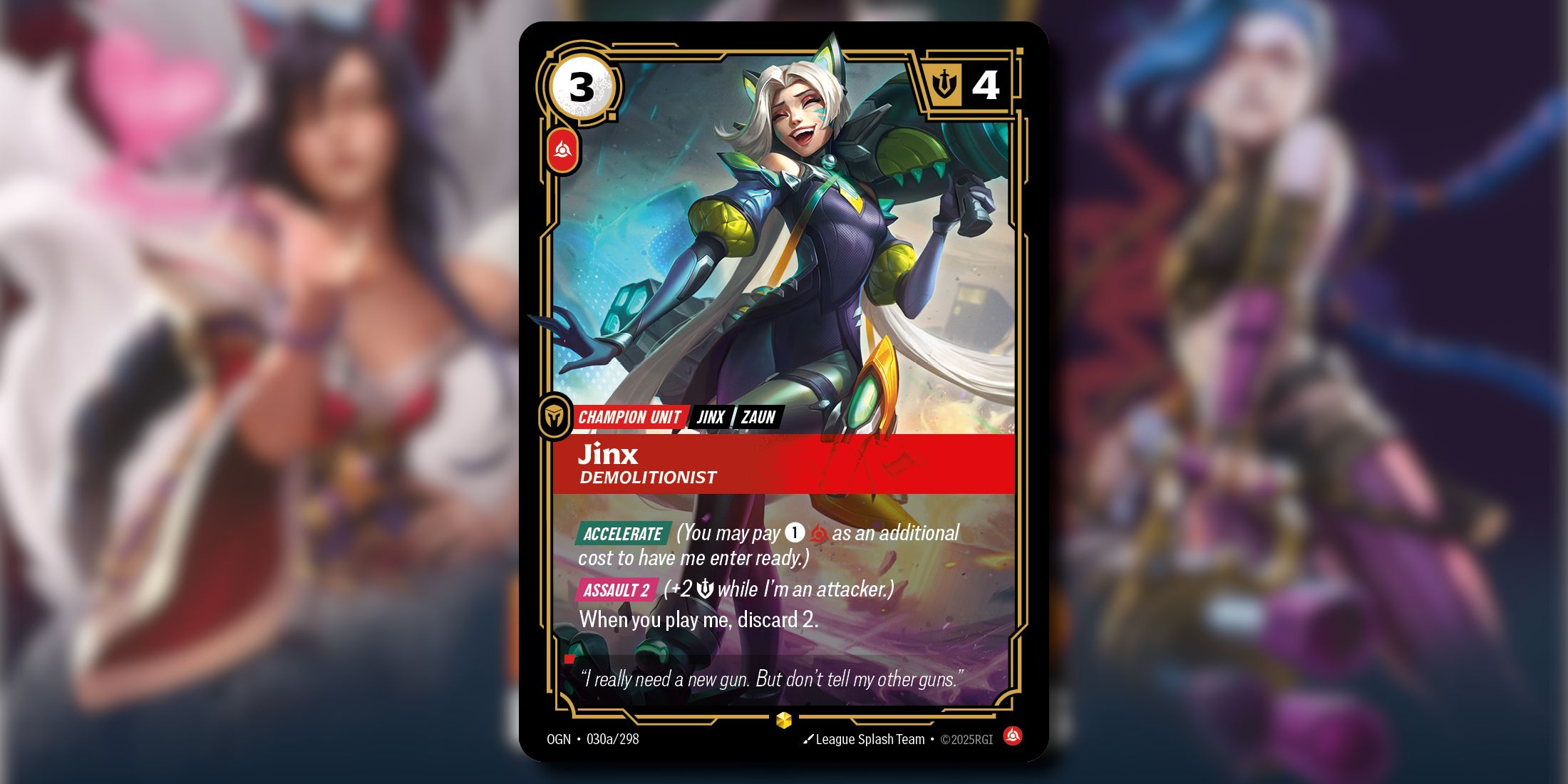
It might actually be also the green one—Yasuo. I think he basically hasn’t changed. We came up with this idea of the battlefields pretty quickly. We wanted to be, like, a creature-combat game, right?
Where the things that fight are on the board, and you move them around to fight with each other. At that point, we were like, “Okay, we want Yasuo to be a really powerful attacker. He comes in, outskills you, takes you out before you have a chance to.” And that was essentially the design of Yasuo for a very long time.
Obviously, a bunch of stuff changed around that, but I think he might have been our first card. I can’t think of anything else earlier. There have been other cards that were also pretty early, but a lot of those we didn’t move forward with—and I don’t really remember them that well.
Totally! Yeah.
Yeah, thanks. So this was a pretty early direction I gave the team—and kudos to my designers, John and Dave, for actually creating the mechanics. I had this vision in my head, but I didn’t quite know how to deliver it, and they came up with a pretty incredible delivery.
It started from the idea that we wanted the game to be social and multiplayer. But even more than that, we wanted it to be accessible. We thought there were a lot of League players who might be interested in a strategy card game like this—maybe they’d never tried one before. So this combination of accessibility and a fun, social experience led me to the direction of: I want to have a space where you feel safe building your army, but I also want you to know that if you want to go for the win, you’ve got to take a risk.
That led to the separation between your base and your battlefields, and it also led to movement being key to the game. You can hang out and build up and feel like you’re making something, but until you start moving, you’re not really pushing toward finishing or winning the game. So mobility became a key component, and then we built on top of that. All of it came back to this idea: we want a social experience that’s easy to access, which means safe space vs. dangerous space, but glory in the middle. That led to the mobility.
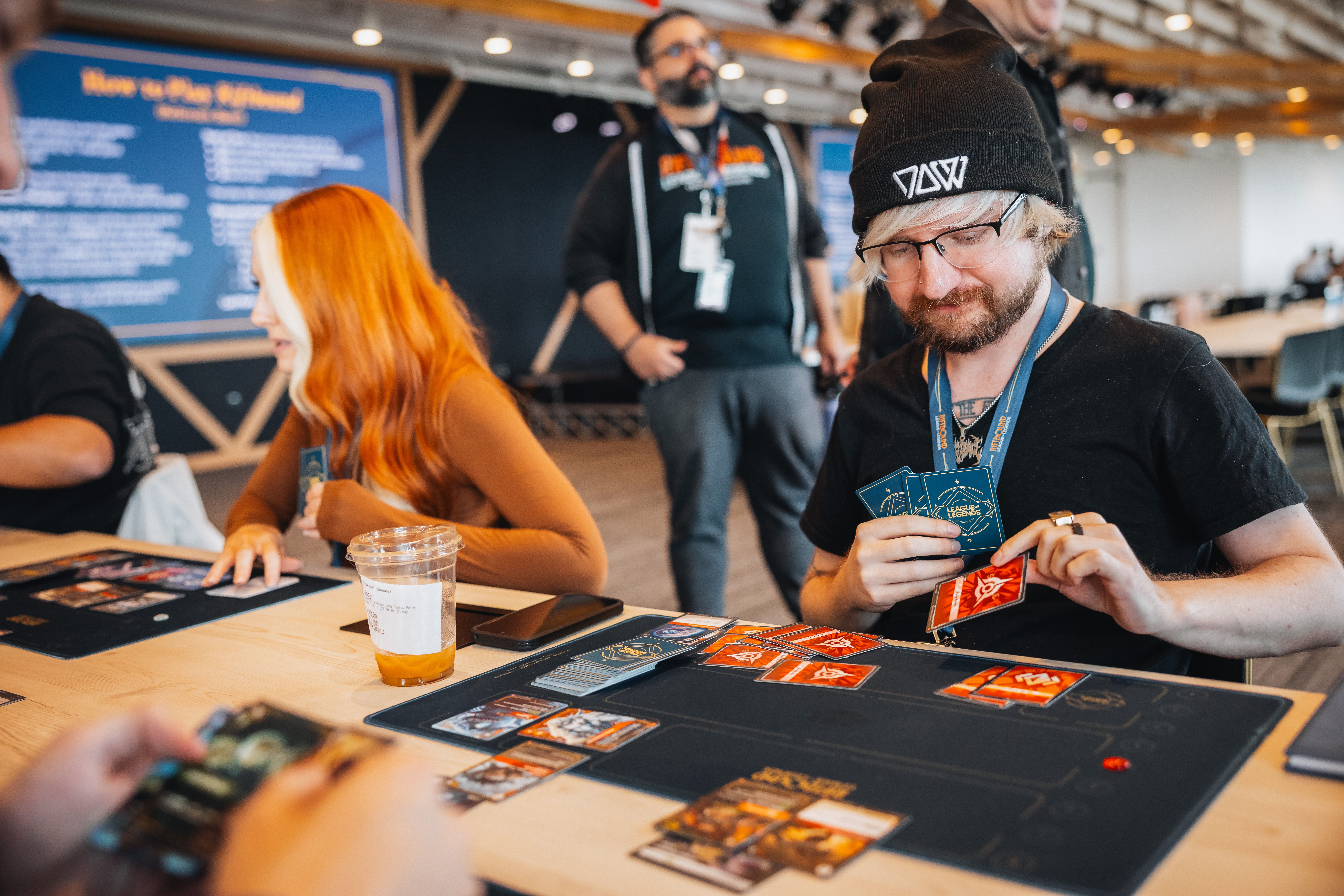
Yeah, it’s a good question. I do think the battlefields are the most unique piece of it for a game like this—kind of a strategy TCG. I also think our resource system—we landed on something that’s pretty cool and unique. I mean, it’s built from a lot of parts you can see in other games, but I think we found something that reinforces some of the unique things about Riftbound.
I mentioned this at the summit, but there’s this idea of “pick your moment”—make your big play, your big swing. And I think our resource system, combined with the battlefields, is that reinforcement piece. So, probably that.
I do think we represent our champions well. We do a good translation from League PC. But that’s not unique to us—there are lots of great card games out there that have truly resonant characters. I think we do that too, but I wouldn’t say it’s the unique thing. It’s just like extra sauce for the unique things about the game.
There were a few things that went into it. One was thinking about popular champions—who are the champions that players are going to want to see in the game and be like, “Oh cool, I’m an X main and I want to play that X deck.”
Also picking a good combination of identities and mechanical playstyles so we could translate from other expressions of League into Riftbound, into a strategy TCG space. Then on top of that, we looked at which champions fit well into existing TCG archetypes that players would already be familiar with.
Like, Viktor plays a bit differently on the Rift than he does in Riftbound. But we represented his vibe from Arcane—gathering an army, going wide. That’s a known archetype in TCGs, and it seemed like a good fit for Viktor. So, it was kind of a combination of factors, and then a little bit of art—trying to balance everything, making sure every aspect is represented, but not overly so.
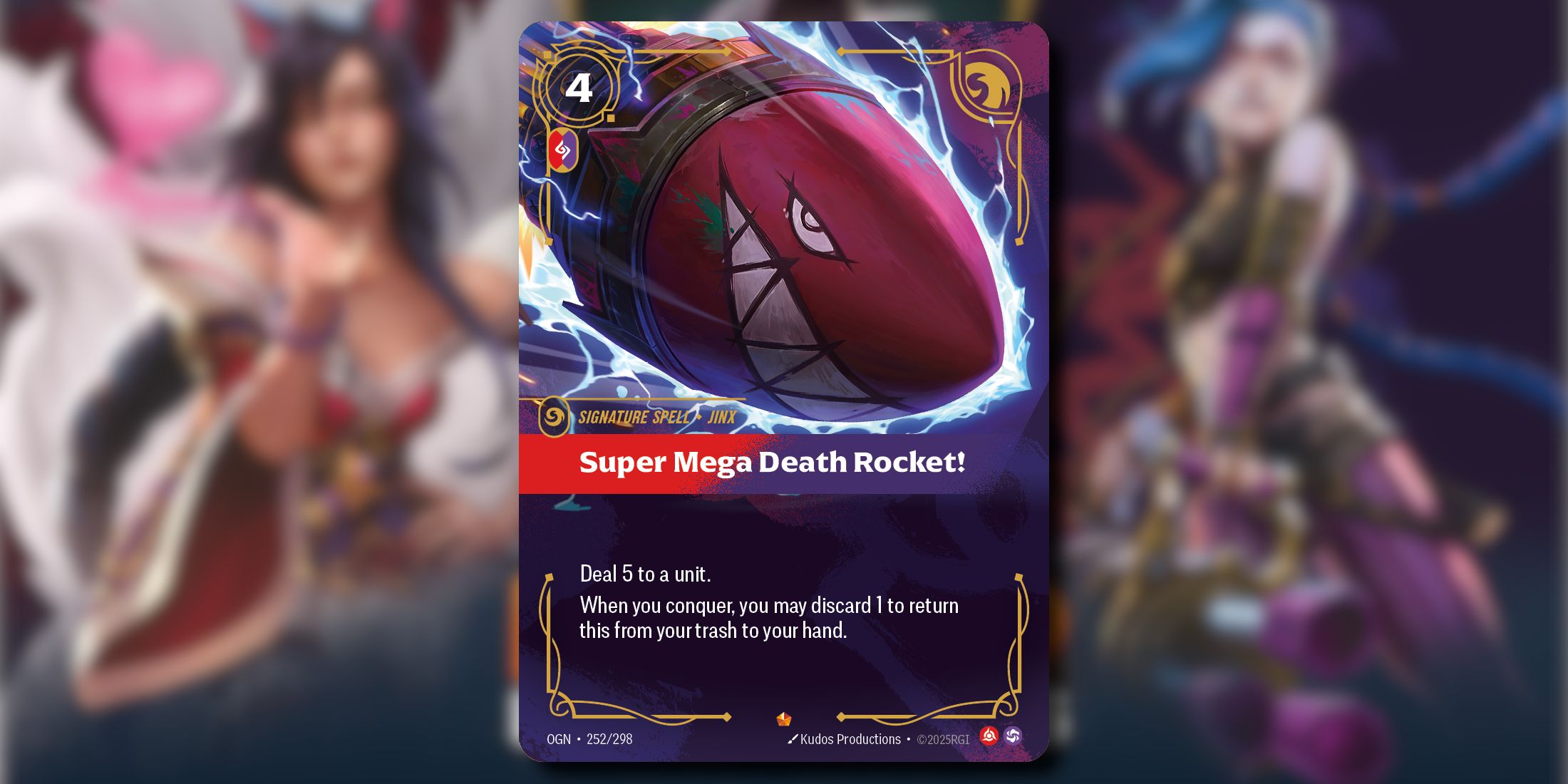
There are a few different ways. One is that it gets political—you can make temporary alliances and break them, and that can be a fun and memorable part of the social play.
We also have a 2v2 mode that I’m pretty proud of. I think it strikes a good balance between competition and cooperation, and you feel like, “Cool, we’re going into this together—how can we enforce each other’s strategies?”
There’s also a lot of good fundamental, nuts-and-bolts multiplayer stuff. When the game goes a little longer, you feel a little safer building up in your base when there are three or four players. That opens up deck-building options and lets people explore cool things. I don’t know if that answers your question.
Yasuo is my favorite, and I usually bring him up because, like you mentioned, he’s tied to mobility—and mobility is a core, key aspect of the game. So if you want an “authentic Riftbound experience” with a champion in Origins, Yasuo is probably one that’s going to show you a lot of the cool stuff the game has to offer.
There are a lot of champions in the first set that play in interesting and unique ways. A few of them line up with archetypes from other card games, so they’re good starting points. But I think the one that’s most unique to Riftbound is probably the Yasuo playstyle. Other champions dip into mobility, but Yasuo is like the center of it.
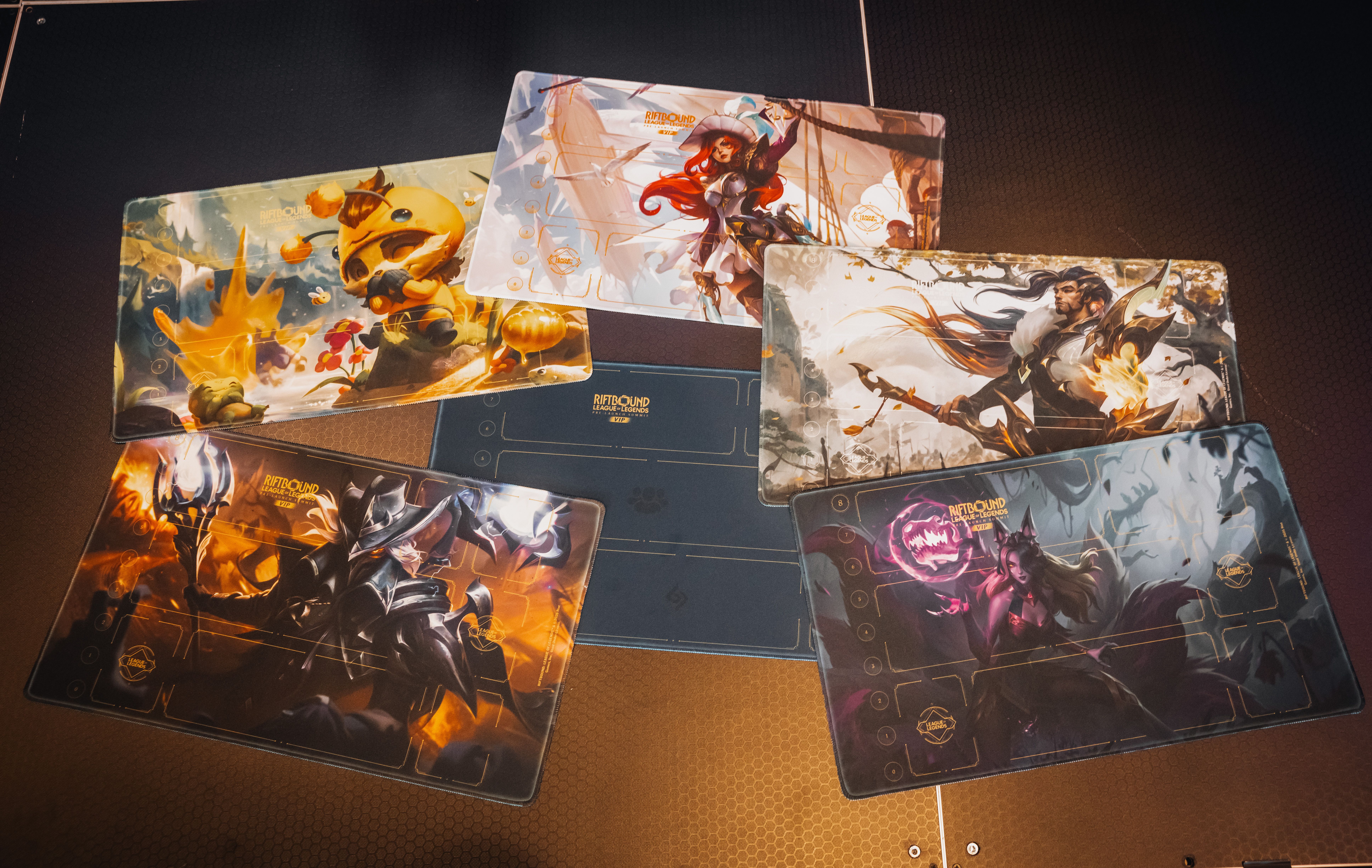
Yeah. I guess it’s not one specific piece of feedback, but I’ve gotten a lot of thoughts about how people are learning the game and where the pain points might be.
We’ve been playtesting with a lot of players, but I only get anecdotal views. So it’s been really valuable seeing how content creators think about teaching the game to their audiences, or how someone in the media would describe the game in an article or video, or how a retailer might demo the game in their local store.
That’s been a great set of perspectives. It’s led us to think about whether we should update the rules in certain ways, or if there are easier ways to explain things. And it’s made us think about different tools we can provide to help these audiences teach the game.
Another big area has been organized play. That’s a pretty big partnership between us and UVS Games in the rest of the world, and Shining Soul in mainland China. It’s been helpful to have those conversations and be able to point to areas that are really popular, or others we need to work on.
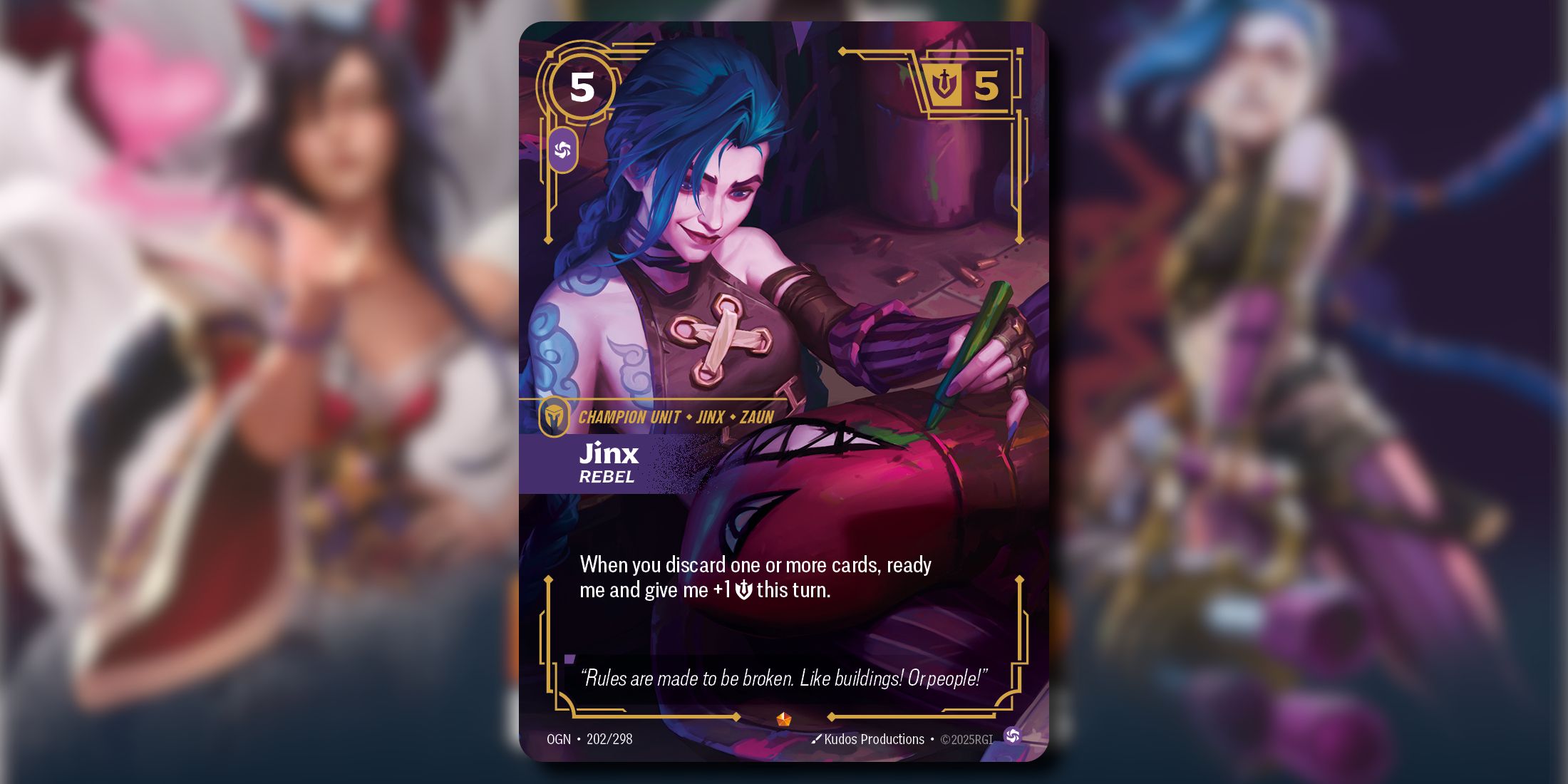
That’s a great question. I don’t know if I’d say “surprised,” because I’ve seen enough people play it that I feel like I’ve seen a lot. But even now, I still see people do things I wasn’t expecting.
We’ve been using these trial decks—the same ones we use in demos—since the TFT event in Macau at the end of last year. So that’s been like, what, seven months now? And even now, I’m still seeing people make plays where I’m like, “Whoa, I haven’t seen anyone do that before.”
Like, I saw a player go into a fight with spells to deal extra damage. The Viktor player had the spell that gives all his units +5, and normally, people use that to go take all the battlefields. But this player used it defensively, and I hadn’t seen that before. So yeah, even now I’m seeing new and interesting ways to combine the pieces. Maybe not “surprising,” but definitely cool.
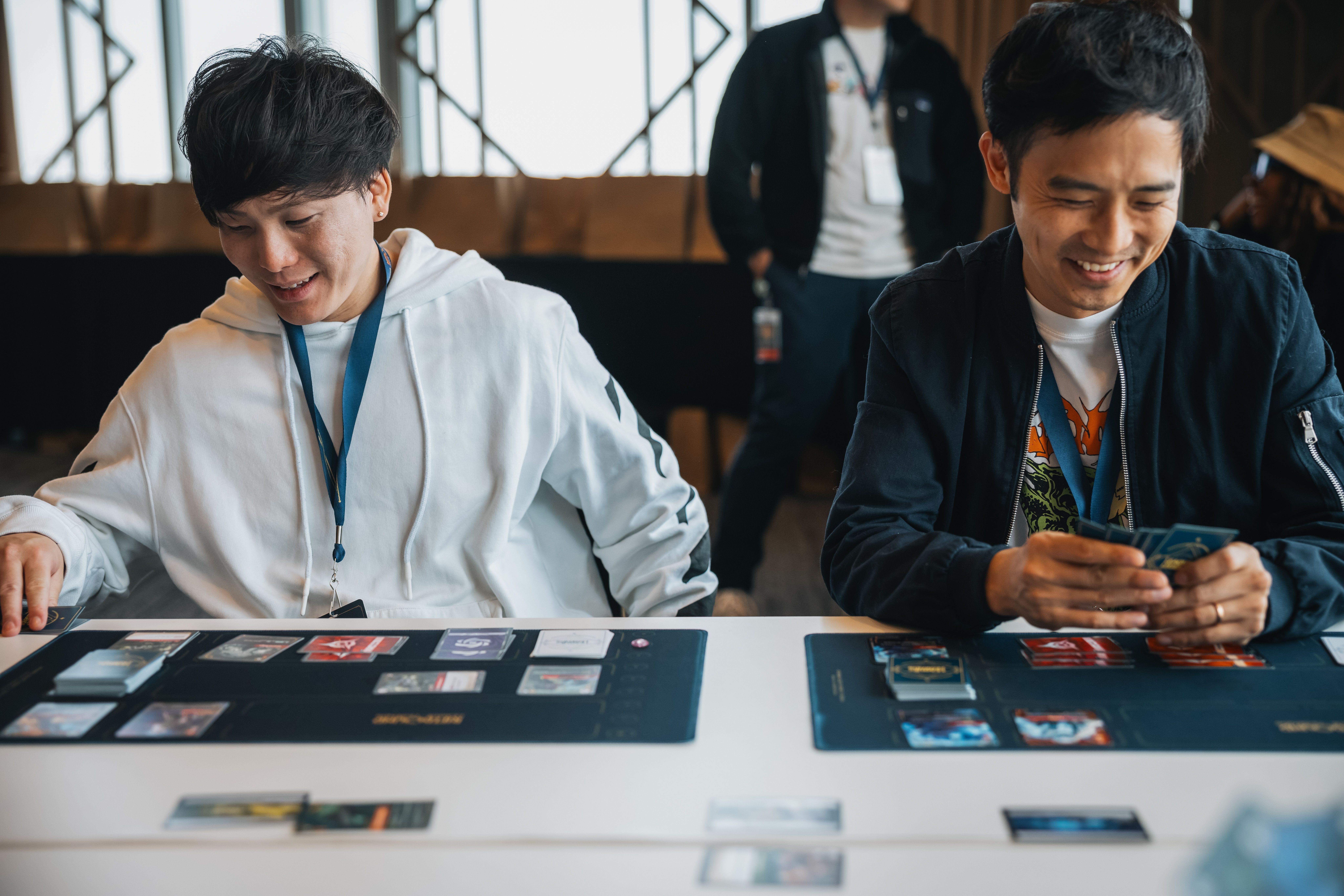
Yeah! Some of the organized play folks at UVS—and honestly, some other folks in the community and on our team—are pretty excited about 5v5. I’m like, “Well, we haven’t tested that yet. It’s not ready for prime time,” but I do think there’s something exciting about having a team of people, right?
Riftbound is fundamentally a very social experience, so the more we can extend that to larger groups, the better. I’m a bit concerned about the complexity of 5v5 experiences, but for now, I think the area with the most potential that we probably want to develop more is 2v2. That’s kind of contained within a single multiplayer game of Riftbound.
I do think there’s interesting space to try out new formats at stores—that might be where we experiment in the future. But mostly, we want to see what players want to play. Even in games like Magic,
Commander came from the community. That just shows the power of letting players show you how they want to play. And I hope—believe—that Riot is good at listening to players. That’s an area where, yeah, I want to see what players come up with. And if they invent a sweet format, I’d love to support that.
Yeah, I think that’s a really interesting space. TCGs have toyed with it before. I know some of my designers are pretty excited about that.
We’ve prototyped a couple of experiences that are similar, but again, not ready for prime time. I think it’s a space we’ll explore in the future. The game is already designed to be welcoming to newer players, so setting it up as a cooperative multiplayer game against a boss or whatever—I think that’s pretty cool. There’s space for that in the League of Legends universe, and it could be a really cool game mode. It just needs time to figure out how to make it work.
This is kind of a truism—or maybe a silly thing to say—but the goal is “easy to learn, difficult to master.” I think I even wrote that on a piece of paper when I was pitching this game to Riot leadership.
For me, it’s about being able to show someone the excitement of the game, but not hit them with all the complexity upfront. You see that a little bit in the trial decks. There’s a bit of interesting resource management, a bit of traps and hidden cards, a bit of mobility in the Yasuo deck—but not too much. You don’t want to be like, “Here’s 100 cards with wild variations of this mechanic.”
So for me, it’s about making a first set and a first experience where you get a little taste of those things and go, “Oh, I’m excited to learn more,” without needing to understand everything in your first game. It’s about designing that ramp-up. I think we did a reasonable job with Origins, and I think our product Proving Grounds—the game-in-a-box—is a good way to do both those things: lower complexity, but still show you some of the cool and exciting things you can do with a deck in Riftbound.
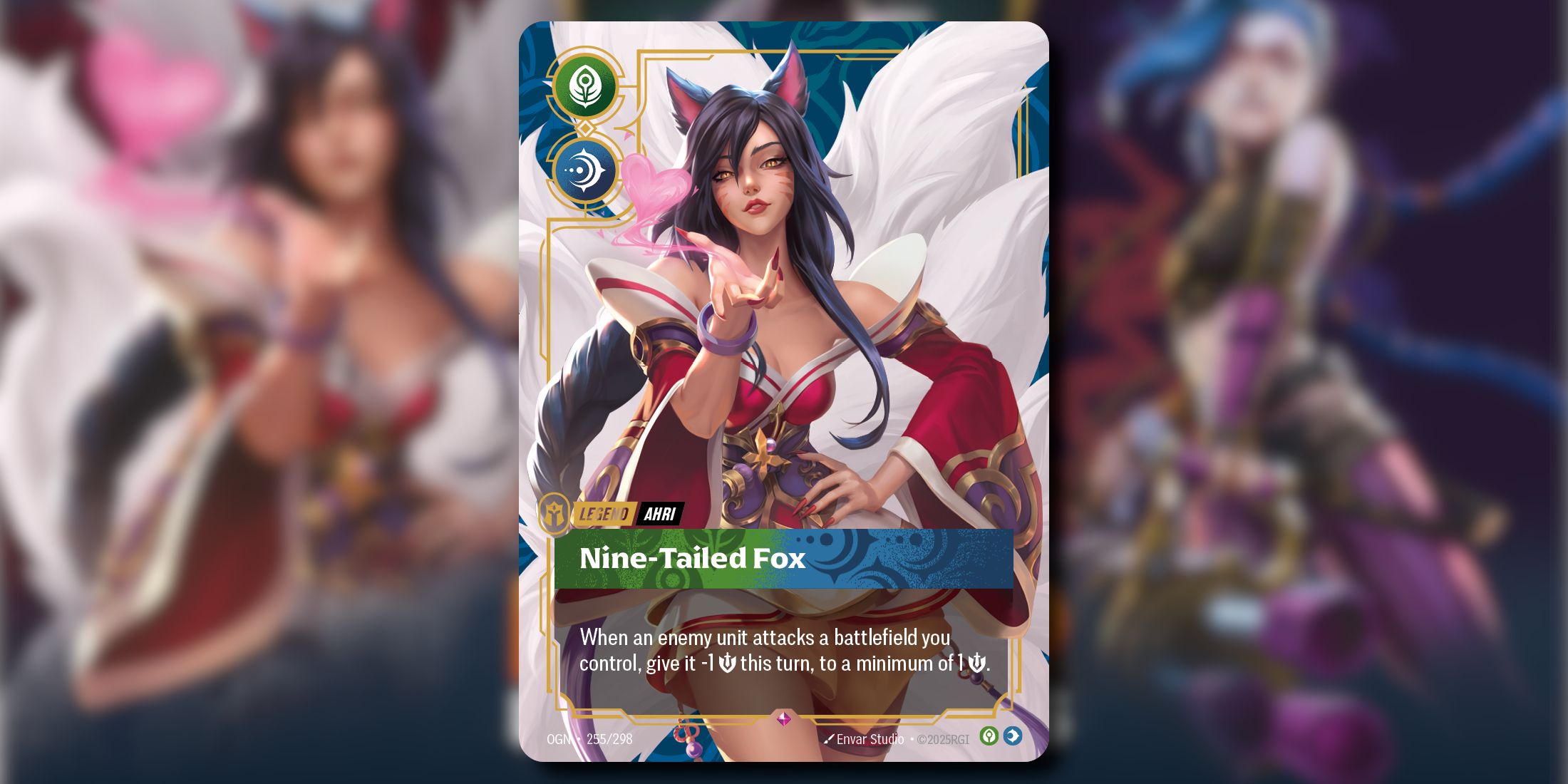
Great question. I can’t see the future, and once millions of players are playing, I’m sure they’ll find things we never found internally. We’ve done our best with a small team to playtest everything, but yeah—there might be situations where it’s really hard to win with Yasuo versus Volibear.
But one thing we do try to do is think about strategies like, “I’m going to get to the endgame and play big monsters,” or “I’m going to be very mobile,” and then consider who might be weak against that. Then we create tools in the environment—in this case, in our first set Origins—so if you're in that situation, you have options. Maybe this card is a little weak on its own, but it’s great against big monsters, or mobility, or whatever you're trying to counter.
We think of those as hidden gems—pressure release valves—where, if one thing turns out to be really strong against another, the tools are at least available. You might be like, “I’m going to my store and I don’t want to lose to this deck,” so you build your deck with those gems to beat that matchup. Maybe that makes you weaker against other decks, but that’s the tradeoff, right?
That’s kind of how we deal with it. And if something turns out to be so strong we need to take action, we’ll pay attention and do that. But yeah, that’s where we’re at.
Q: Yeah, I noticed that in the deck building. I really appreciate that you guys let us do that, because it let me sit there and really think about all the possible combinations. There were some cards where I was like, “This is very situational, but if I was in that situation, this would be an amazing card to have.”
A: Yeah. I’m glad you had a chance to do that. It was very exciting for us to see people get their hands on the cards and build their own decks.
Q: And do you have any advice for upcoming Riftbound players? Are there certain mistakes they should look out for?
A: If you’re coming from another card game, especially, you might see things that remind you of a mechanic in a different game. But I’d urge people to process the rules of Riftbound as you play—try to separate yourself from how you expect it to work based on other games.
That’s because we didn’t reinvent the wheel where we didn’t need to, but we did put the parts together in different ways. So it might not match your intuition.
For players coming from League who are new to TCGs, I’d recommend playing a multiplayer game first—like a 3- or 4-player game. It’s lower pressure, and it’s easier to learn the mechanics as you go. There’s no player elimination, so you’re in it until the end and still doing things that impact the game.
Those are probably the two big pieces of advice I’d give. If you’re a tried-and-true TCG fan, I’d say just dive in. Try out a champion that appeals to you—whether that’s from League, Arcane, or just the playstyle. Like, “Oh, I want to make tokens? Great, I’ll pick Viktor.” I think you’ll find something to love. So don’t be afraid to just pick one and play it. They’re all pretty fair and fun against each other.
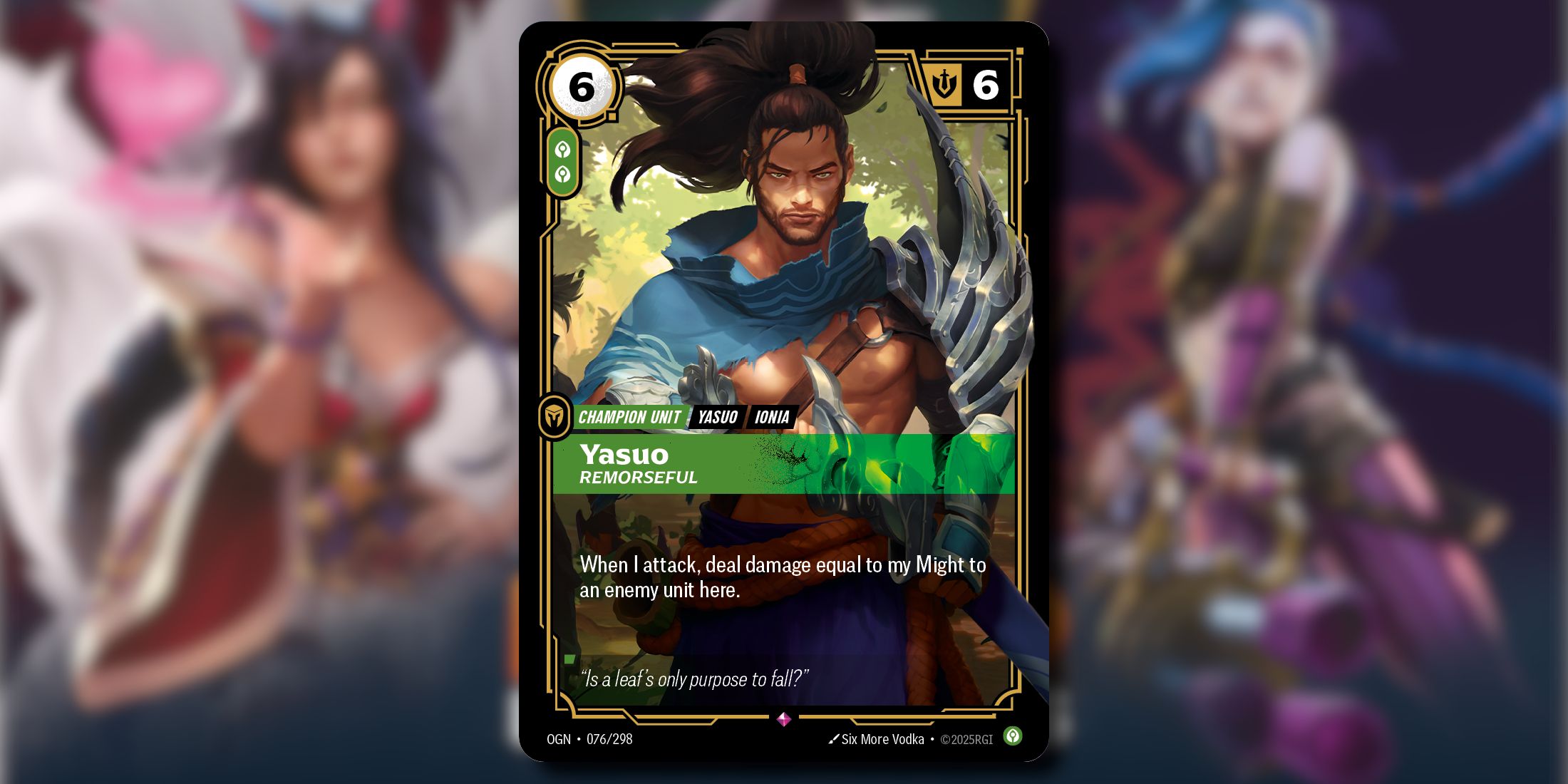
Q: Something that’s always interesting to me about card games is how they land on what the deck size should be. How much is too much? How much is too little? What led you to land on 40?
A: Yeah, a few different factors. One is the combination of total number of cards and quantity of each individual card you can have. That defines how many different cards you have to hold in your brain while building a deck.
In this case, it’s like between 10 and 15 different unique cards, and we thought that was a reasonable amount for a person to think about. Another factor is, if cards are difficult to acquire, we don’t want to make you collect so many that it’s hard to build a deck. That kind of pushes the deck size down.
But if the deck is too small, it becomes too reliable to get the cards you want, and games will just play out the same way every time. So there’s a balance between those factors. We tried a few different sizes, played with them, saw how it felt, and decided, “Let’s try out 40 and see how it goes.” And that was kind of how we ended up where we did.
Q: And correct me if I’m wrong—I think the release cadence for new sets is four a year?
A: Yeah, one a quarter is the plan for the main booster set releases.
Q: I was curious how you landed on that cadence. You could’ve done two a year, or even just one. How did you end up with four?
A: Again, it’s a balance. From what we’ve seen in player sentiment from other card games, and in discussions with players, and our own team’s thinking—it’s like, we want sets to come out frequently enough that people don’t feel like the metagame is getting stale.
You don’t want someone to go to their store every week and be like, “Oh, I’ve seen the same decks every time. How boring.” So we want to release new cards often enough that players feel like things are changing.
But we also don’t want to overwhelm them. We don’t want it to feel like, “Oh my god, I just built this deck and now I have to rebuild it again and again.” So again, it’s that balance between disruption and stability that led us to four a year. That’s our target. But this is another area where we’ll listen to stores and players—see how they feel about it. Is it the right level of new cards? The right level of disruption? We’ll see.

Q: I mean, the metagame is unavoidable in TCGs. It’s just going to happen. Are you already seeing one developing based on the playtests? Are there certain decks or playstyles gaining traction?
A: I would say so. For the trial decks—the four decks we use in demos—I’d say Viktor is probably a little stronger than the others. Illaoi is probably a little weaker. But that doesn’t mean you can’t build those decks differently once you have the full card pool.
For folks who’ve played internally with the full Origins set, I’d say there are vigorous debates about what’s the strongest. If I had to guess, I’d probably pick about three or four of the twelve champions as being the strongest.
But a lot of it comes down to local metagames. What we think is strong might not be strong in your area, because that’s not what people are playing. And it’s possible we missed something. Like, when you’re trying to figure out all the combinations among 300-ish cards, if you miss one thing—it’s the pebble that starts the avalanche. And suddenly you’re like, “Did we even really know anything?”
So I’m hopeful that we kind of know what’s strong and what’s not, but we’ll find out. Players will tell us better than we ever could once the cards are out.
Q: Yeah, it’s inevitable. Once you have millions of people doing all the math, it’s just impossible to avoid.
A: Yeah, they’ll show us pretty quickly.
Q: One thing I like about Riftbound is that it’s more of a race than a fight to the death. What advantages do you think that brings to TCG gameplay?
A: I think it’s got a few benefits. One is that it’s more accessible. If you’re not getting eliminated, that means you have a chance to come from behind—even to the very end. So that keeps the game interesting longer.
The emotional tenor of a race to eight points feels a lot different than a fight to the death. In a race, it’s like, “Cool, there are a lot of different ways to win.” In fight-to-the-death games, it can feel like, “Well, if I’m not aggressive, what are we even doing?” That can skew how people think about the game.
I think our approach opens up more possibilities with that race mechanic. There are some disadvantages—some people just want to prove they’re the stronger one. And we still support 1v1 play where it is zero-sum, so you still get that. Even though it’s not as direct as fighting to the death, I think you still get that aspect. But yeah, a lot of benefits, and we’ve enjoyed it so far.
Q: I think it definitely enables more multiplayer functionality—like, not being eliminated five minutes into the game because everyone destroyed you. That’s a huge thing.
A: Yeah, right. I don’t want a situation where people get together for a fun game night, and five minutes in one person has to just sit out for the rest of the hour or whatever. That feels terrible.
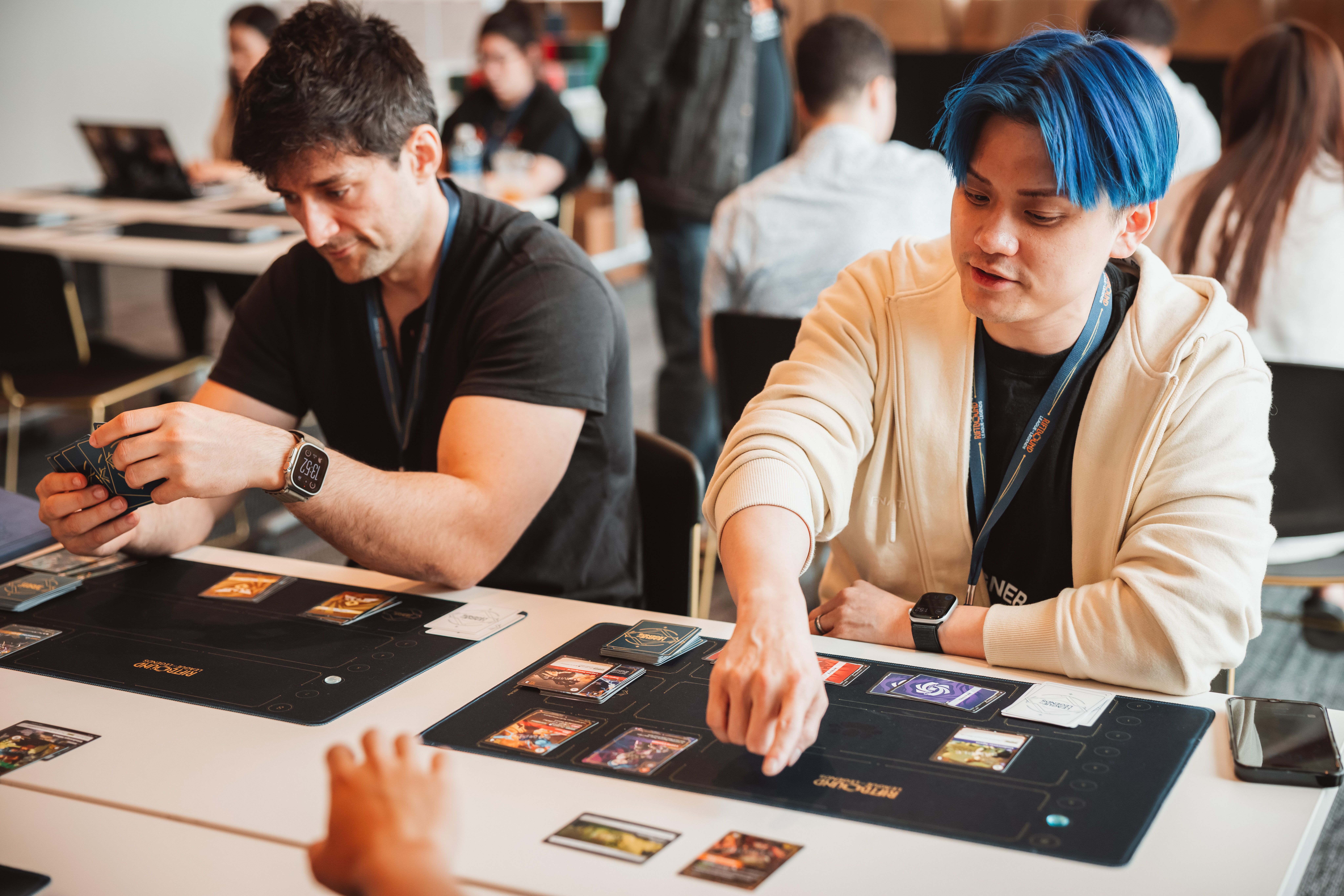
Q: Do you have advice for deck-building in Riftbound? Are there certain considerations people should keep in mind?
A: Yeah. Especially in our first set, Origins, I think a good way to start is to look at the Legends. Figure out which champions you want to build a deck around. Then look at the champion units and signature cards, and figure out, “Okay, cool, do I want to play these? Do I want to play a full number of them?”
That combination—your Legend, the champion, and their signature card—will give you a pretty strong strategic direction. At that point, you can go into the card file, look at your colors, and probably figure out quickly which cards support that strategy.
It’s always good to have low-cost units so you can contest battlefields. Even the most controlling decks still need to prevent people from just running away with a battlefield. That’s probably the biggest mistake I’ve made as a deck-builder. I like going crazy and building creative engines, but it’s like, no—you’ve still gotta go for battlefield control. It’s very important. That’s probably the biggest “gotcha” in the game when building decks.
Q: Any final thoughts you’d like to share with fans or up-and-coming players?
A: I’m just very excited to have players get their hands on Riftbound, especially with our Origins set and our launch. I’m really excited to see people build decks. Joey, it was great that you had a chance to come play and build decks—that was kind of the first time we had people in the wild, not internal playtesters, making decks.
I’m excited to see it. And my biggest hope is that we have enough players out there playing that they can show us just how wrong we were in our design and balance—and we can improve from that feedback.
I think I mentioned this at the summit, but player feedback is so, so important. I just can’t wait to get more from players once they start playing.
[END]
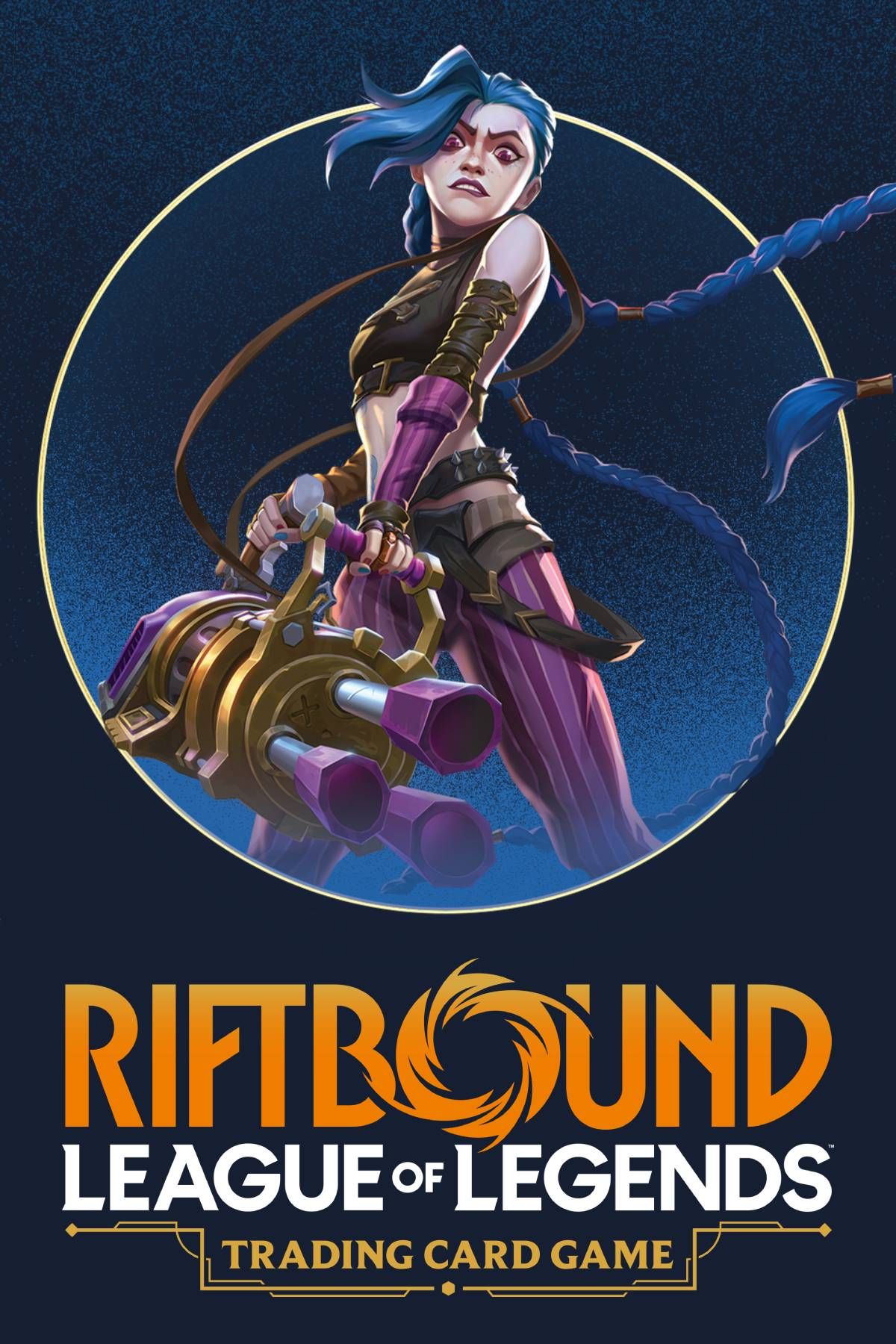
- Franchise
- League of Legends
- Original Release Date
- 2025
- Publisher
- Riot Games, UVS Games
- Player Count
- 2+
